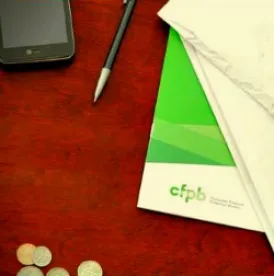On October 29, 2021 — just 32 days prior to the November 30, 2021 effective date — the Consumer Financial Protection Bureau (CFPB) released new guidance regarding the debt validation notice requirements that are part of the upcoming debt collection rules. Specifically, the CFPB provided (1) new Frequently Asked Questions related to the special rule for certain residential mortgage debts when a mortgage servicer might otherwise be required to fully display the itemization information; and (2) a 27-page guidance document explaining how debt collectors comply with the itemization information requirements when populating a debt validation notice. Earlier in October, the CFPB published on its website a Spanish translation of the debt validation notice model form.
For mortgage servicers, all guidance from the CFPB is certainly welcomed and couldn’t come soon enough. With the effective date quickly approaching, many — perhaps most — in the industry are still struggling with how to operationalize many of the debt validation requirements, including the concept of choosing an itemization date in certain scenarios and the required content that flows from the itemization date. Even though the CFPB included a special rule for certain residential mortgage debts that allows a servicer to not display much of the itemization information when it includes a copy of the most recent periodic billing statement with the debt validation notice, there still are challenges that many servicers are struggling to overcome. In that regard, the CFPB’s guidance does clear up some questions and theoretically makes a couple of things much easier. However, unfortunately the guidance also raises even more questions and, quite frankly, puts servicers in a bit of a tough spot with little time to react.
In its new guidance, the CFPB clarified that, when taking advantage of the mortgage special rule, a servicer that is a debt collector can utilize a periodic statement that it sent after it acquired the loan and enclose it with the debt validation notice. Mortgage servicers are not limited to statements provided by the prior servicer and sent to the borrower before a loan transferred. Essentially, so long as the most recent statement was required by Section 1026.41 of Regulation Z at the time it was sent, it can be utilized for purposes of the mortgage special rule. This clarification is helpful because there were some questions about whether this would be permitted, particularly given some of the language in the law regarding whether a debt collector can use the date of the most recent statement as the itemization date when that statement was sent by a debt collector.
In addition to clarifying how it intends for the mortgage special rule to work, the CFPB also went much further. In FAQ 5 in the Validation Information: Residential Mortgage Debt section, the CFPB explained that, if a mortgage servicer takes advantage of the mortgage special rule, it must use the date of the statement as the itemization date. This is where the CFPB provides theoretical assistance to the mortgage industry but probably raises serious unintended questions. When choosing an itemization date, Regulation F says that a debt collector can choose the date of the most recent statement that was provided to the consumer by a creditor or a service provider to the creditor. The commentary goes on to explain that a debt collector cannot choose the date of the most recent statement if it was provided to the consumer by a debt collector, unless the debt collector was also a creditor. The CFPB’s new guidance now seemingly changes that requirement for mortgage servicers when taking advantage of the mortgage special rule. Not only can a mortgage servicer now use the date of the last statement as the itemization date even when it is a statement that was provided by a debt collector, the CFPB suggests the servicer must do so. That guidance applies regardless of whether the most recent statement was provided by an entity that qualified as a debt collector.
Tying the itemization date to the date of the most recent periodic statement — particularly when that statement was sent by a servicer that is a debt collector — alleviates lots of concerns that servicers have expressed. In many ways, it allows for a more consumer-friendly approach because the limited itemization information that must still be displayed, such as the account number as of the itemization date, and will align with the information provided to the borrower in the periodic statement. It also is hard to envision any downside from a consumer’s perspective of a servicer taking this approach.
However, it is worth pointing out that the CFPB’s FAQs are specifically categorized as a compliance aid. According to the CFPB’s January 2020 policy statement on its use of compliance aids, although they are intended to “accurately summarize and illustrate the underlying rules and statutes,” “regulated entities are not required to comply with the Compliance Aids themselves. Regulated entities are only required to comply with the underlying rules and statutes.” This presents quite a dilemma for mortgage servicers. Given some of the uncertainties present in the CFPB’s guidance, it is hard to get excited about the described method of choosing an itemization date when taking advantage of the mortgage special rule without more formal action by the CFPB prior to the November 30, 2021, effective date.
Ultimately, the CFPB’s new guidance leaves many important questions unanswered. For example:
-
If a mortgage servicer can only take advantage of the mortgage special rule with a statement that was required by section 1026.41 of Regulation Z at the time it was sent, can a servicer that is subject to those billing statement requirements utilize an off-cycle, ad-hoc statement to satisfy the rule?
-
Where is the support for the CFPB’s interpretation that a servicer must use the date of the most recent periodic statement when it is taking advantage of the mortgage special rule, or that the itemization date can be the date of a statement provided by a debt collector?
-
Will the CFPB scrutinize a servicer that takes advantage of the mortgage special rule, but still chooses an itemization date that is different from the date of the most recent statement? For example, can a servicer utilize the origination date in that scenario?
Given the uncertainties that remain, we implore the CFPB to continue to work with the mortgage servicing industry to resolve the numerous open questions that continue to linger. Additionally, and perhaps more importantly, we hope the CFPB will consider taking more formal action in the coming weeks to codify its most recent guidance. With the rules’ effective date quickly approaching, the CFPB has put mortgage servicers in a tenuous position and may have created more problems than solutions with its recent guidance.






 />i
/>i

